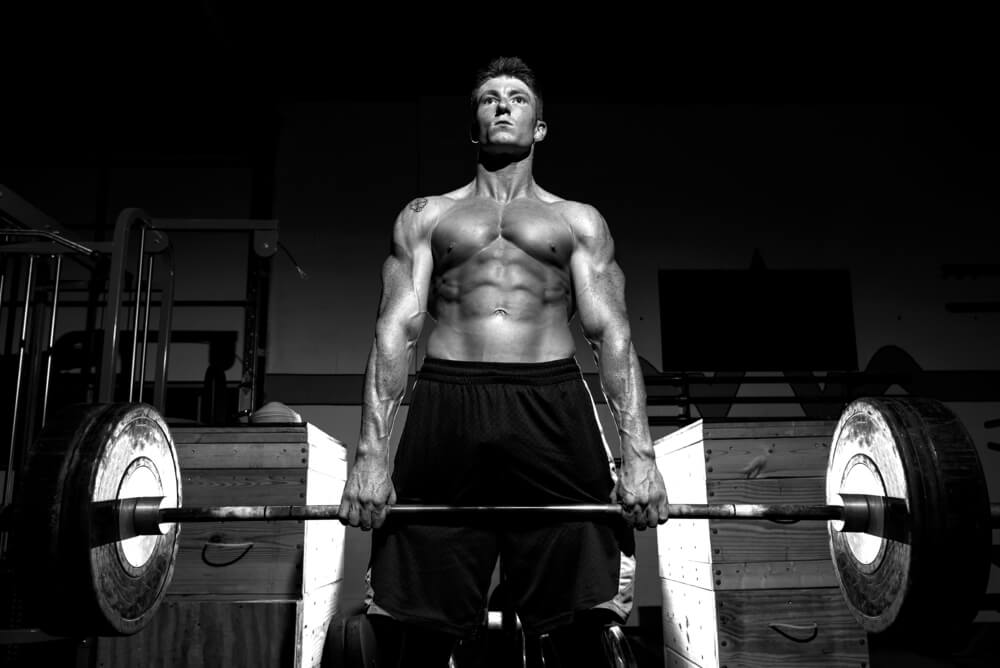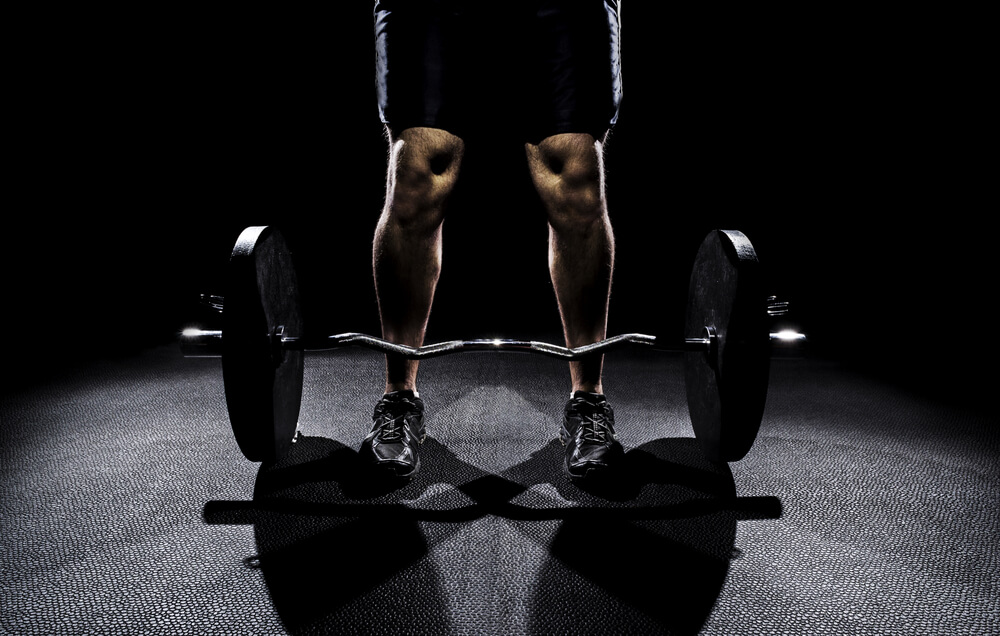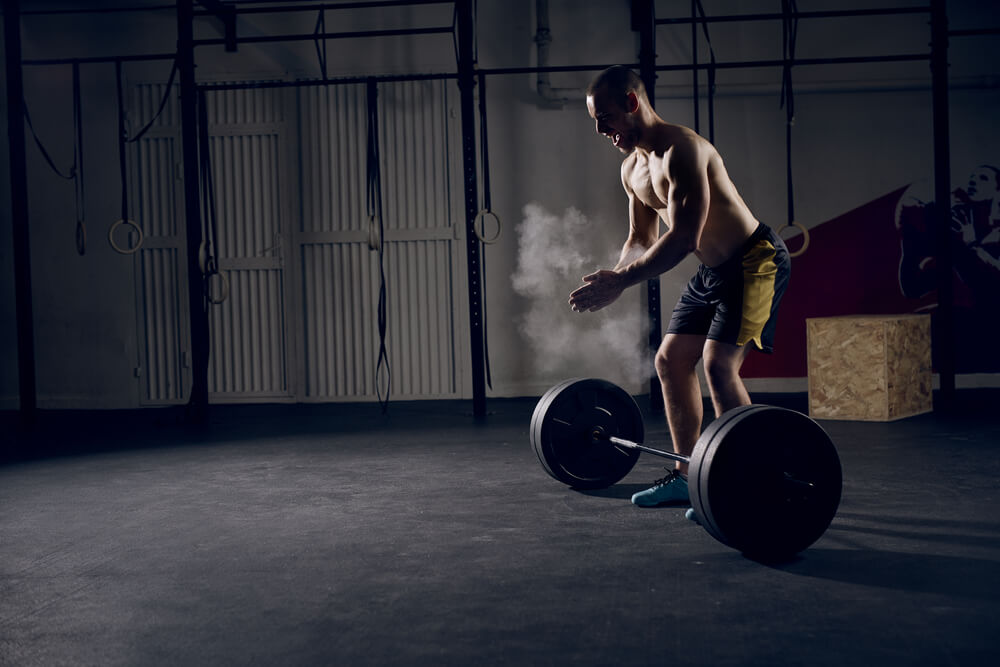 Ever see an Olympic lifter not looking amazing? We thought so. Here’s your guide to lifting like a world-class athlete—your body will thank us!
Ever see an Olympic lifter not looking amazing? We thought so. Here’s your guide to lifting like a world-class athlete—your body will thank us!
Walk into any gym, or even just observe people working out in general, and you’re bound to witness some sort of resistance training (or strength training).
The National Academy of Sports Medicine defines resistance training as any training of the body that increases its functional capacity to adapt to stressors. Put simply, increasing the body’s ability (or capacity) to handle weight and force (or stressors).
The most common form of this is weightlifting and, more specifically, Olympic lifts. There truly is no better way to go back to basics, reclaim your body’s health (inside and out) and build a killer physique than Olympic lifts. Let’s start by looking at the benefits of weightlifting in general. After that, we’ll get into the specifics of Olympic lifts.
What Are Some Of The Key Benefits of Olympic Lifts?
There are countless benefits to lifting weights, most of which extend well beyond the goal of building bigger muscles. Performing weightlifting exercises, such as Olympic lifts, on a regular basis can do many things.
It can increase your resting metabolic rate, which means you burn more calories at rest. It will improve your cholesterol levels, which will help reduce your risk of diabetes and heart disease. It can improve your mental health and strengthen your bones. This will allow you to stay active and healthy as you age.
Taking a brief glimpse at each of these benefits helps paint a full picture of why lifting weights is so important. It goes without saying that lifting weights increases the size, strength and power of your muscles. And, since muscle tissue burns more calories than fat does, your body will constantly be burning more calories with every bit of muscle mass you gain, even when you’re not working out!
How Could It Affect My Health?
Strength training also diminishes the risks for all types of heart disease, by increasing HDL (good cholesterol), decreasing LDL (bad cholesterol) and normalizing high blood pressure. Furthermore, developing diabetes can be prevented due to improved insulin sensitivity and reduced resting insulin levels.
In terms of mental health, pumping iron can help relieve depression and anxiety, combat fatigue and give you more energy. Lastly, lifting weights gives you that all-important muscle mass and strength, which elderly people tend to lose quickly in a dangerous condition called sarcopenia. This goes hand-in-hand with bone mineral density, which also declines with age, increasing the risk of fractures.
It sounds counterintuitive, but by placing stress on your bones, weightlifting actually stimulates them to grow thicker and stronger. Having thicker and stronger bones as you age can prevent osteoporosis, or even slow/reverse the progression of existing osteoporosis.
Your joints benefit as well, as these exercises reduce the risk of developing osteoarthritis by lessening pain and making movement easier. It’s quite obvious that weightlifting exercises such as Olympic lifts can open a world of benefits for your mind, body and spirit.
Olympic Lift Basics
The simple explanation of Olympic lifts is that it’s an athletic discipline used in Olympic sports. Basically, the athlete performs a maximum-weight single lift of a fully loaded barbell.
In this case, fully loaded means loaded with as many weight plates as you can safely handle. This rigorous practice teaches an athlete how to apply large amounts of force.
And more rapidly than those who aren’t properly trained in this practice. This is no easy feat. In comparison with other strength sports that may or may not use lifting aids, weightlifting tests aspects of human ballistic limits, otherwise known as explosive strength.
The lifts are therefore performed faster, with more mobility and a wider range of motion during their execution. Those trying Olympic lifts must master the ability to apply rapid force in a highly efficient and synchronized style. Keep that in mind as we move on to the two standard Olympic lift moves: The snatch and the clean-and-jerk. When properly executed, these moves are dynamic and explosive, while also appearing graceful.
The Two Movements
As mentioned, the two movements that make up Olympic lifts are the snatch and the clean-and-jerk. While these names are most definitely comical, the skill and precision it takes to perform them is no joke.
The snatch can be thought of as a deadlift, barbell shrug, jump squat and overhead squat, combined into one motion. If that sounds complicated and confusing, that’s because it is. When trying to do this on your own, start with a very light weight, increasing slowly as needed and as you continue to get the form down properly. Keeps your abs contracted the entire time. This will keep you from getting back injuries. A strong core is critical.
The clean-and-jerk can be broken down into the clean, picking up the bar from the ground and raising it up to your shoulders, and the jerk, pressing the raised weight from your shoulders over your head.
Don’t just think of these movements as a deadlift followed by a shoulder press. Speed and form are crucial factors you’ll need to ultimately lift large amounts of weight in just a matter of seconds. All of this info can be overwhelming, which is why we’ll now clarify get into detailed instructions.

Details On The Snatch
Remember, the goal is to take the barbell from the floor to over your head in one single motion. For the set up, place your feet hip-width apart and directly under the barbell. Bend over and grab the bar, using a wide grip. Many Olympic competitors use the full length of the bar, so feel free to do so if your height, arm length and shoulder flexibility allow for it.
Assume a squat position, making sure that your back is flat, your arms are straight and your hips are higher than your knees. Keep your gaze forward. Next is the pull. Begin to lift, using your legs, glutes and back. Maintain the bar at a distance that’s very close to your shins, but not touching them or your knees.
Once the bar is safely above your knees, accelerate with all of your power and simultaneously extend your ankles, knees and hips (a triple extension) as you rise onto your toes.
Now it’s time for receiving the bar. While extending, compress your shoulders into a shrug and pull yourself under the bar. You want to place yourself into a full squat position. While the bar is passing over your head, rotate your wrists over and push the bar into a full lockout with extended arms by using your shoulders and triceps. At this point, your feet may want to jump out to shoulder width, and that’s okay.
You should now be in a full squat position with your torso upright, your arms locked out at the elbows and the bar placed over your ears. Finally, there’s the stand. Once you feel that you’ve secured control of the barbell, stand up straight while extending your knees and hips. Make sure to always keep the bar directly over your ankles and hips. In theory, the snatch isn’t finished until you’re completely motionless. For that reason, make sure to end it correctly and lower (or drop) the barbell with control.
Words can be difficult to follow, and it is certainly a great deal of info to take in.
You might want to ask a trainer to show you the move. Or, you could also check out a few YouTube videos.
Details On The Clean-And-Jerk
You’ll find that the flow and names of the steps are very similar to that of the snatch. For the set up, place your feet hip-width apart and directly under the barbell. Bend over and grab the bar using a wide grip.
Assume a squat position, making sure that your back is flat, your arms are straight and your hips are higher than your knees. Keep your gaze forward. Notice a pattern here? You should, because it’s the exact set up as the one used for the snatch. Once you’re all ready to go, it’s time for the pull.
Explosively pull the bar, using your legs, hips and back. As with the snatch, maintain the bar at a distance that’s very close to your shins, but not touching them or your knees. Then, triple extend your ankles, knees and hips as you rise onto your toes.
Next, you guessed it, is receiving the bar. With your body extended, compress your shoulders into a shrug and pull yourself under the bar. You want to go into a full squat position while the bar passes your chest. Now push your elbows out in front of you, rotating your wrists over and receiving that bar directly on top of your clavicles and deltoids. This is followed by the stand.

Once you feel that you have the barbell under complete control, stand upright and dig your heels into the floor.
This step is essentially a front squat. Your torso can lean forward slightly and your hips can shift backwards if needed, as long as the bar always remains over your ankles.
Lastly, there’s the jerk. Drop down by bending your knees and hips no more than four inches. Now explosively extend your knees, hips and elbows while thrusting the bar over your head. Lean your head back and allow the bar to rise above your shoulders.
When the bar passes your head, jump one leg forward and the other backward, going into a split-like position. Both feet should land at the same time and your arms should lock the bar overhead. Return your head to a neutral position so that the bar is over your ears. You can now bring both feet back together, about hip-to-shoulder-width apart, and stand fully upright.
You might find this move more difficult to follow even more than the snatch. Getting someone to show you how to do it or watching a video is absolutely necessary. Watch at least a couple of videos to make sure that the info given isn’t just one person’s take on how to do it. The few minutes you spend will be worth it.
How Do I Include Olympic Lifts In My Workouts?
All of this has been well and good so far, but how exactly can you incorporate Olympic lifts into your workout routine in a safe and practical manner? Luckily, this part is quite simple.
In terms of safety, just know that unless done with 100% proper form, these moves can result in serious injury. Many websites and people will even tell you not to do Olympic lifts at all, or at the very least to attempt them at your own risk. Just remember that safety is always the top priority. Make sure that you’re medically cleared to exercise and that your body can handle these explosive movements.
Once you decide that you’re able and willing to try them out, start slow. Go at your own pace and, above all else, listen to your body. It will tell you what it can handle and when it’s had enough. It’s suggested that you start out twice a week inserting Olympic lifts into your current workout routine.
Many people perform them before they do any other exercises, but there are no rules on when. Do them when it feels right for you, and feel free to ask a personal trainer or fitness specialist/expert for ideas. Work up to four sets of each exercise. You can always modify and increase or decrease as needed. These are all just ideas to help you on your fitness journey.
Conclusion
Olympic lifts can be a very beneficial addition to your workout routine. When done right, you’ll notice results and feel a sense of accomplishment. After all, you’re doing moves that pro-Olympic competitors do and that’s pretty remarkable.
The main takeaway is that if you treat your body well by incorporating beneficial exercises like Olympic lifts into your lifestyle, your body will treat you well in return. Happy lifting!
– By Nicole Dimacale
Terry
Latest posts by Terry (see all)
- How Important Are Net Carbs For Building Huge Muscle? - Apr 28, 2017
- The Matt Damon Workout Explained - Apr 27, 2017
- Watercress – Benefits And The Best Way To Consume It - Apr 26, 2017









